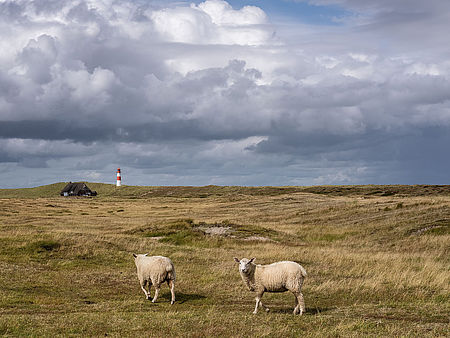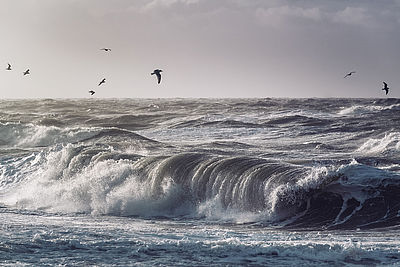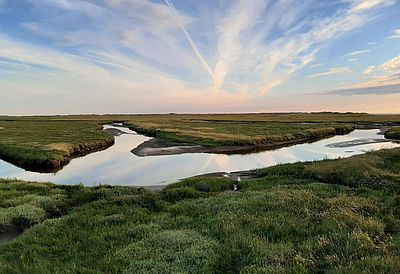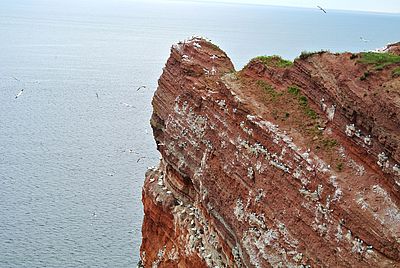
Landscape at the North Sea
A typical picture of Schleswig-Holstein’s North Sea coast has three colours: A deep blue for the sky and the sea, a light brown for the beach and a rich green for dunes and fields. Oh, and the signal colour red for the lighthouse, of course.
The North Sea is something like the big, wild sister of the Baltic Sea: It is a marginal sea of the Atlantic Ocean, which carries salty water into the North Sea via currents along the Scottish and northern Norwegian coasts and through the English Channel. Due to its comparatively shallow depth of only 100 metres at most and due to the eastern, southern and western mainland, the sea is often rough and “choppy” – as they say in sailor’s parlance when the waves run against each other on the surface. These conditions are a challenge for all seafarers who, both in the past and today, are pleased to see the beacons showing the way, especially when visibility is poor – the maritime landmark of Schleswig-Holstein, the land between the seas.

In addition, the unchanging wind and the eternal change of high and low tide have a decisive influence on the landscape of the North Sea coasts: The Schleswig-Holstein Wadden Sea National Park, a UNESCO World Heritage Site since 2009, extends over 4,410 square kilometres from the northernmost tip of Sylt to the mouth of the Elbe. A large, untouched area of mud, sandbanks, dunes, dykes and salt marshes that is home to around 10,000 animal and plant species and where nature can be nature.

